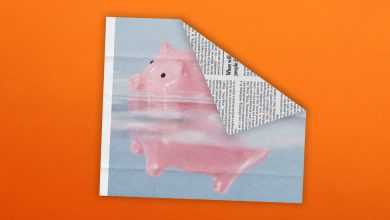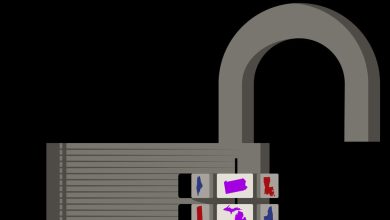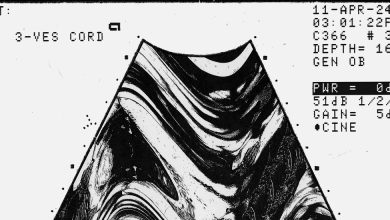How a Recession Might — and Might Not — Happen

The U.S. economy is still very strong, with, for example, initial claims for unemployment insurance at their lowest point since 1969. Yet everyone is talking about recession. And the truth is that there is a significant chance of recession over the course of the next few years. But do people understand why?
Part of the answer is that there is always a chance of a recession in the near future, no matter what the current data look like. As the bumper stickers don’t quite say, stuff happens. There’s always a chance of, say, a financial crisis few saw coming or a war that disrupts world trade.
Our current situation, however, clearly creates elevated risks of recession, mainly because policymakers — mainly, in practice, the Federal Reserve — are trying to steer a course through opposing dangers. They could pull it off — in fact, my guess is that they will. But they might not. And here’s the thing: The kind of recession we have, if we do have one, will depend on which way the Fed gets it wrong.
Where are we right now? Inflation is, of course, unacceptably high. Some of this reflects disruptions — supply-chain problems, surging food and energy prices from the war in Ukraine — that are likely to fade away over time. In fact, I’d argue that these temporary factors account for a majority of inflation, which is why just about every major economy is experiencing its highest inflation rate in decades.
But inflation, which used to be mainly confined to a few sectors strongly affected by the pandemic, has broadened. So I find myself in reluctant agreement with economists asserting that the U.S. economy is overheated — that overall demand exceeds productive capacity and that the two need to be brought in line.
The good news is that there’s essentially no evidence that inflation has become entrenched — that we’re in the situation we were in circa 1980, when inflation persisted simply because everyone expected it to persist. Every measure I can find shows that people expect high inflation for the next year but much lower inflation over the medium term, indicating that Americans still view low inflation as the norm. Here, for example, are results from the New York Fed survey of consumer expectations:
An aside: I wish people would stop talking about a “wage-price spiral.” Such a spiral is supposed to happen when workers demand higher wages because they believe they deserve compensation for a rising cost of living. Ask yourself: Does this sound like the America we live in these days? Who, exactly, are these workers who are demanding what they believe they deserve? We’ve become a country in which workers take what they can get, and employers pay what they must. In such a country, the whole wage-price spiral narrative makes no sense.
But back to the current situation. The fact that inflation is not yet entrenched offers the possibility of a soft landing. I’d schematically represent where we are and what should happen like this:
In the figure, potential G.D.P. is the level of output consistent with an acceptable rate of inflation — a level that grows over time. I agree — reluctantly, as I said — that we’re currently above that level. But we can close that gap without having a recession simply by slowing growth, while letting potential G.D.P. catch up. As long as inflation isn’t entrenched in expectations and temporary disruptions fade away, closing the gap should bring inflation down to an acceptable rate.
Why do I call this the “Goldilocks path”? Because, as the next figure shows, policy can err in either direction:
One possibility, which has been the subject of many, many rants from inflation hawks, is that the Fed is moving too slowly, that the economy will run too hot for too long — the red path in the figure — and that inflation will become entrenched. At that point, bringing the inflation rate down would require putting the economy through the wringer, the way Paul Volcker did in the 1980s, when it took years of extremely high unemployment to undo the inflationary legacy of the 1970s. That is, inadequate tightening by the Fed would set the stage for a nasty recession down the pike.
But there’s another possibility, which if you ask me isn’t getting enough attention. Namely, that the Fed will move, or maybe already has moved, too fast and that the economy will cool off much more than necessary. In that case — shown by the blue path in the figure — we could have an unnecessary recession, one that could develop quite quickly.
Why worry about this possibility? After all, so far the Fed hasn’t done much in the way of concrete action: It has raised the interest rate it controls by only a quarter of a percentage point. But the longer-term interest rates that matter for the real economy, especially mortgage rates, have already soared based on the expectation that there will be many more rate hikes to come:
As a practical matter, then, the Fed has already done a lot to cool off the economy. Has it done enough? Has it done too much? That’s really hard to say.
After all, there’s a reason I used schematic figures rather than real numbers to make my argument in today’s newsletter. Most, though not all, macroeconomists seem to agree that the economy is at least somewhat overheated. But there’s no consensus on how much. Nor do we really know how much the rise in interest rates will slow the economy. And these uncertainties make the Fed’s job really hard right now.
What we do know, or at least what I’d argue, is that there is a path through this difficult moment that needn’t involve a recession. And while the Fed can get it wrong — and will almost surely get it wrong to some degree, because these are tricky times — it can get things wrong in either direction. Right now I am, if anything, worried that the Fed is overreacting to inflation. But time will tell.





